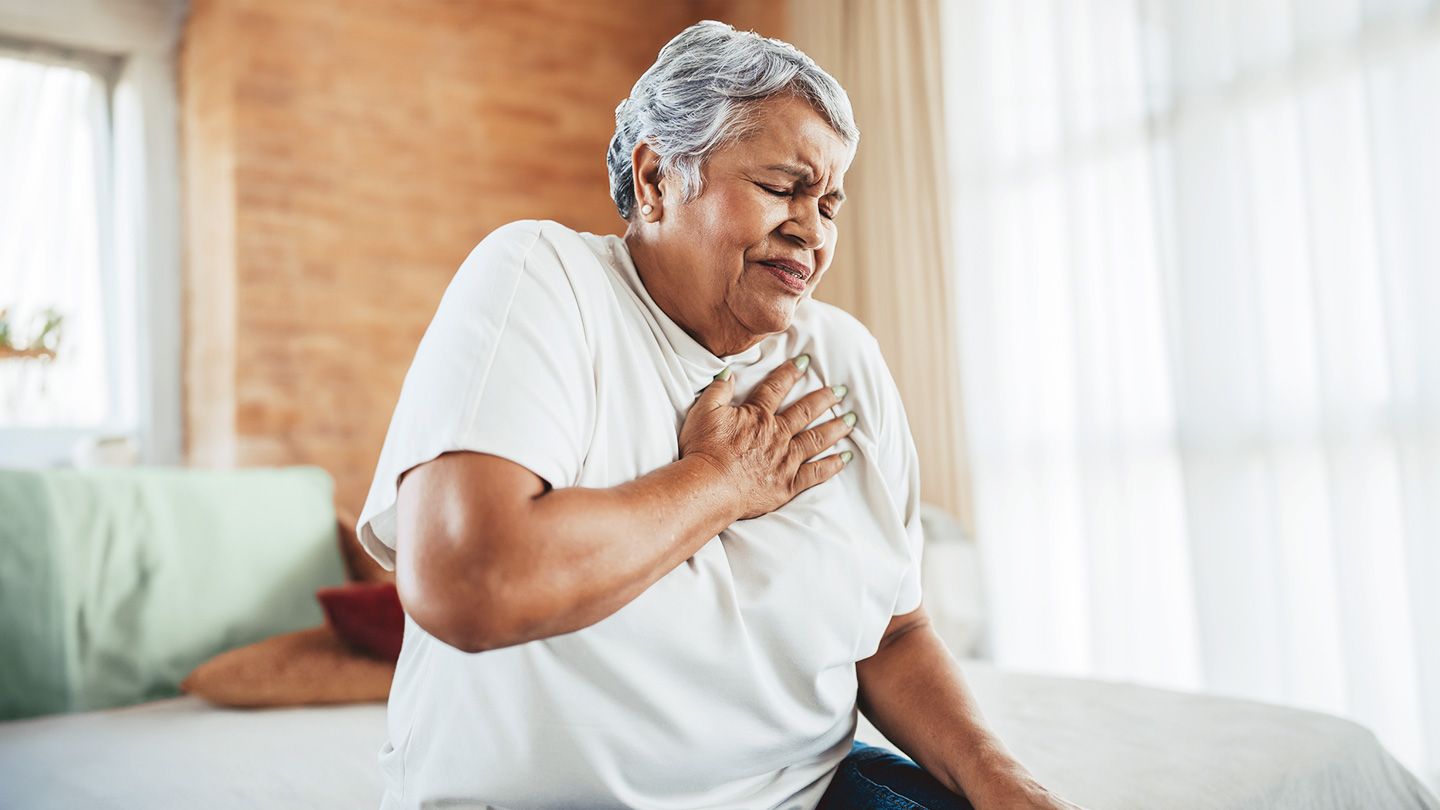A heart attack, or myocardial infarction, occurs when blood flow to part of the heart muscle is reduced or blocked, starving it of oxygen-rich blood and eventually causing it to die. Most often, this blockage occurs after plaque — deposits of fat, cholesterol, and other substances — builds up in the coronary arteries, which supply the heart muscle with blood. When that plaque ruptures or breaks, a blood clot forms around it, blocking the already narrowed blood vessel.
Chest pain or discomfort is the hallmark symptom of heart attack. It’s usually felt in the center or left side of the chest as a sharp crushing, squeezing, or pressing sensation or a kind of painful heaviness or fullness. It can also present as a stabbing or burning feeling like heartburn or indigestion. This chest discomfort may last a few minutes or more than 20 minutes, or come and go.
Sudden upper-body pain or discomfort is another sign of heart attack. This feeling may initially appear to radiate from chest discomfort, but it may also occur separately and affect your:
- Arms (one or both)
- Back
- Jaw
- Neck
- Shoulders
- Upper stomach
Shortness of breath is often an early sign of heart attack, especially for older adults. It usually accompanies chest discomfort, but it can also occur beforehand when you’re resting or moving through light physical activity. It may even be the only symptom you experience.
Other symptoms to be aware of include:
- Cold sweat
- Dizziness or lightheadedness
- Nausea and vomiting
- Rapid or irregular heartbeat
- Sleep disturbances
- Unusual fatigue or weakness
These symptoms may also be early warning signs of a heart attack, suddenly appearing weeks before any dramatic chest discomfort occurs.
Some heart attacks are even “silent,” occurring without symptoms or with mild symptoms that feel more like heartburn or the flu. These events may be more common in women and people with diabetes.
Heart attacks in women tend to be more subtle and easy to miss. While chest pain is still the most common sign, women often experience it as pressure or tightness rather than a crushing pain. And they are more likely than men to experience other heart attack symptoms, such as fatigue, sleep disturbances, and digestive symptoms like nausea and indigestion. Some women also experience:
- A squeezing or pressure in the upper back that feels like a rope is being tied around them
- Cough
- Heart flutters
- Heartburn
- Loss of appetite
Read the full article here




